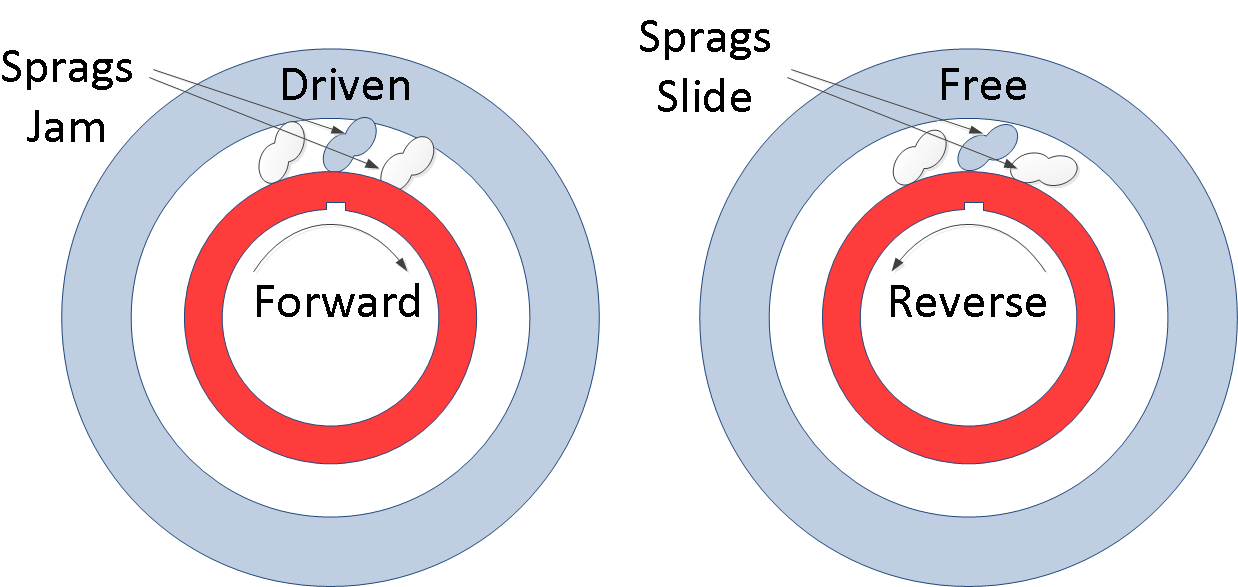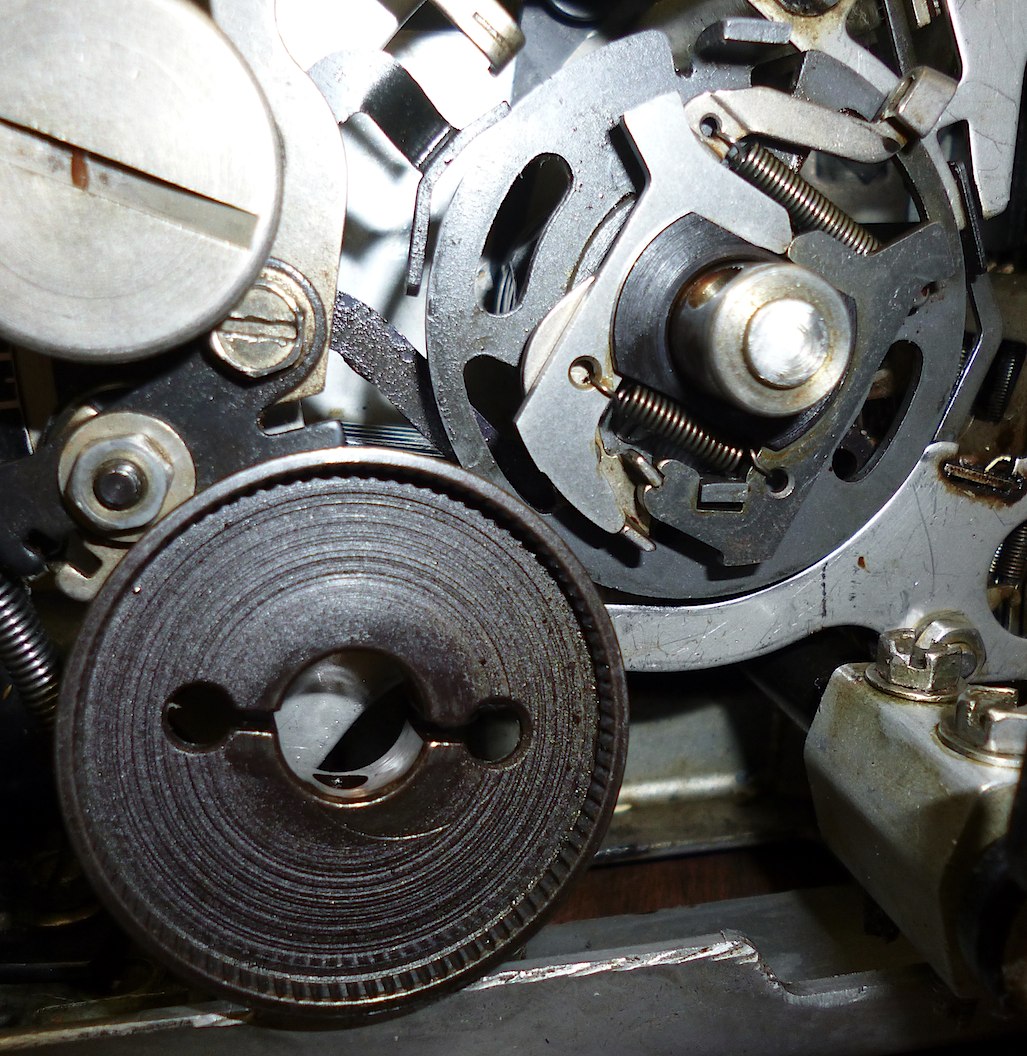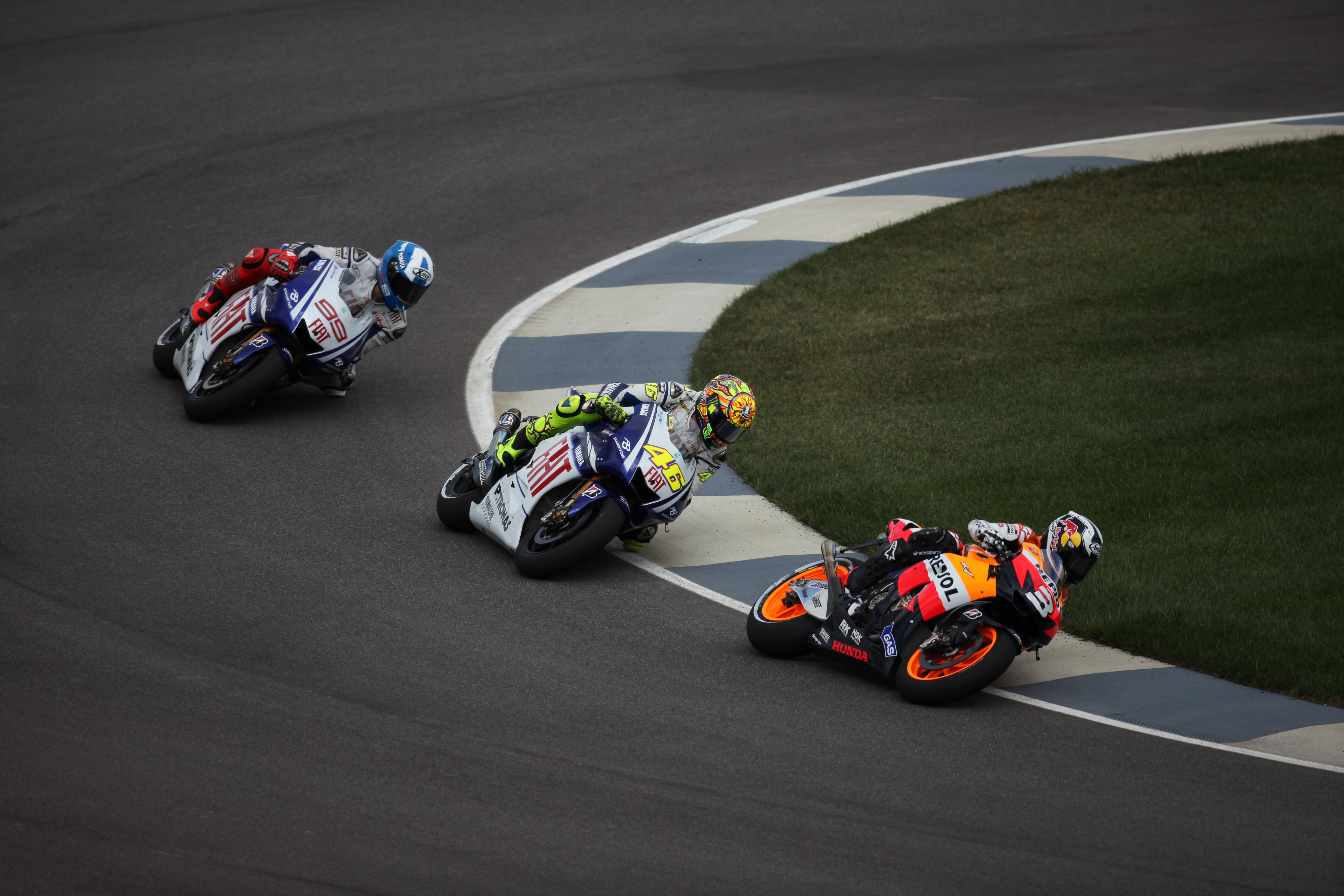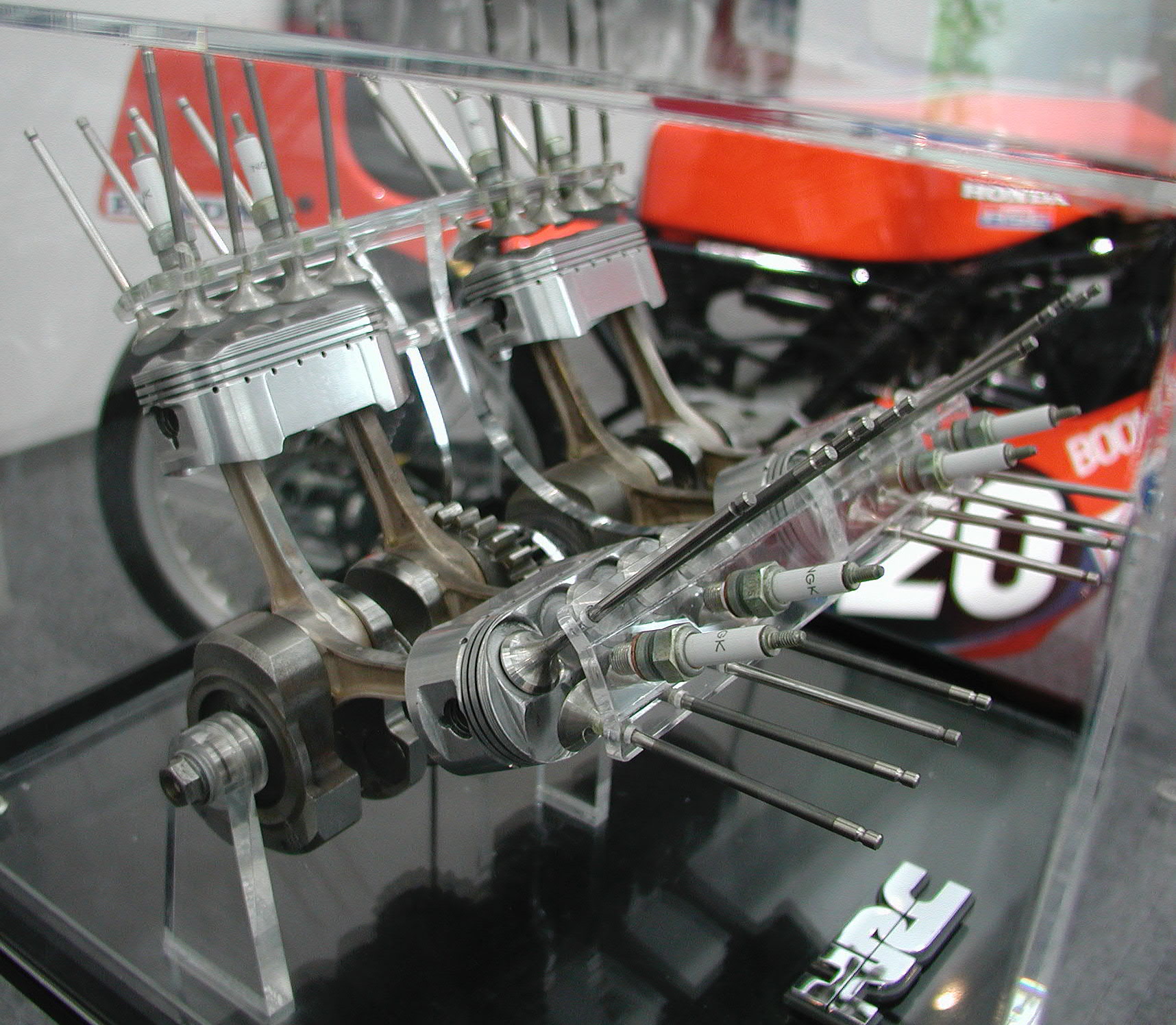|
Slipper Clutch
A slipper clutch ''(also known as a back-torque limiter)'' is a specialized clutch with an integrated freewheel mechanism, developed for performance-oriented motorcycles to mitigate the effects of engine braking when riders decelerate. The main purpose of a slipper clutch is to prevent over engine rev and rear wheel hop (or clatter) especially under hard braking in a vehicle (usually performance motorcycles). It does so by partially slipping until engine's speed matches with the vehicle's speed upon sudden braking. Design The slipper clutch consists of two bases, one with dog clutches and ramps with ball bearings, a splined hub, and clutch plates. In normal operation, the dog clutches mate, driving the transmission. When a back torque comes from the transmission, the splined hub slides up the bearing ramps, disconnecting from the clutch plates and allowing a limited slip between input and output. This type of clutch is designed to partially disengage or "slip" when the rear whe ... [...More Info...] [...Related Items...] OR: [Wikipedia] [Google] [Baidu] |
Clutch
A clutch is a mechanical device that engages and disengages power transmission, especially from a drive shaft to a driven shaft. In the simplest application, clutches connect and disconnect two rotating shafts (drive shafts or line shafts). In these devices, one shaft is typically attached to an engine or other power unit (the driving member), while the other shaft (the driven member) provides output power for work. Typically the motions involved are rotary, but linear clutches also exist. In a motor vehicle, the clutch acts as a mechanical linkage between the engine and transmission, and briefly disconnects, or separates the engine from the transmission system. This disconnects the drive wheels whenever the clutch pedal is depressed, allowing the driver to smoothly change gears. In a torque-controlled drill, for instance, one shaft is driven by a motor, and the other drives a drill chuck. The clutch connects the two shafts so they may be locked together and spin at the ... [...More Info...] [...Related Items...] OR: [Wikipedia] [Google] [Baidu] |
Sprag Clutch
A sprag clutch is a one-way freewheel clutch. It resembles a roller bearing but, instead of cylindrical rollers, non-revolving asymmetric figure-eight shaped sprags, or other elements allowing single direction rotation, are used. When the unit rotates in one direction the rollers slip or free-wheel, but when a torque is applied in the opposite direction, the sprags tilt slightly, producing a wedging action and binding because of friction. Applications Automatic transmissions A sprag clutch is used in some automatic transmissions as a method of allowing the transmission to change gears smoothly under load. Various models of General Motors' Turbo-Hydramatic transmission have used this system as well as many transmissions from Ford, such as the Ford C6 transmission. A sprag clutch is used in most older automatic transmissions and some newer ones for shifts which require the synchronized engagement of one clutch with the disengagement of another. Using an overrunning clutch instea ... [...More Info...] [...Related Items...] OR: [Wikipedia] [Google] [Baidu] |
Sprag Clutch
A sprag clutch is a one-way freewheel clutch. It resembles a roller bearing but, instead of cylindrical rollers, non-revolving asymmetric figure-eight shaped sprags, or other elements allowing single direction rotation, are used. When the unit rotates in one direction the rollers slip or free-wheel, but when a torque is applied in the opposite direction, the sprags tilt slightly, producing a wedging action and binding because of friction. Applications Automatic transmissions A sprag clutch is used in some automatic transmissions as a method of allowing the transmission to change gears smoothly under load. Various models of General Motors' Turbo-Hydramatic transmission have used this system as well as many transmissions from Ford, such as the Ford C6 transmission. A sprag clutch is used in most older automatic transmissions and some newer ones for shifts which require the synchronized engagement of one clutch with the disengagement of another. Using an overrunning clutch instea ... [...More Info...] [...Related Items...] OR: [Wikipedia] [Google] [Baidu] |
Clutch
A clutch is a mechanical device that engages and disengages power transmission, especially from a drive shaft to a driven shaft. In the simplest application, clutches connect and disconnect two rotating shafts (drive shafts or line shafts). In these devices, one shaft is typically attached to an engine or other power unit (the driving member), while the other shaft (the driven member) provides output power for work. Typically the motions involved are rotary, but linear clutches also exist. In a motor vehicle, the clutch acts as a mechanical linkage between the engine and transmission, and briefly disconnects, or separates the engine from the transmission system. This disconnects the drive wheels whenever the clutch pedal is depressed, allowing the driver to smoothly change gears. In a torque-controlled drill, for instance, one shaft is driven by a motor, and the other drives a drill chuck. The clutch connects the two shafts so they may be locked together and spin at the ... [...More Info...] [...Related Items...] OR: [Wikipedia] [Google] [Baidu] |
Freewheel
Freewheel mechanism In mechanical or automotive engineering, a freewheel or overrunning clutch is a device in a transmission that disengages the driveshaft from the driven shaft when the driven shaft rotates faster than the driveshaft. An overdrive is sometimes mistakenly called a freewheel, but is otherwise unrelated. The condition of a driven shaft spinning faster than its driveshaft exists in most bicycles when the rider stops pedaling. In a fixed-gear bicycle, without a freewheel, the rear wheel drives the pedals around. An analogous condition exists in an automobile with a manual transmission going downhill, or any situation where the driver takes their foot off the gas pedal, closing the throttle: the wheels drive the engine, possibly at a higher RPM. In a two-stroke engine, this can be catastrophic—as many two stroke engines depend on a fuel/oil mixture for lubrication, a shortage of fuel to the engine starves oil from the cylinders, and the pistons can soon seize, ... [...More Info...] [...Related Items...] OR: [Wikipedia] [Google] [Baidu] |
Sport Bike
A sport bike (sports motorcycle, or sports bike) is a motorcycle designed and optimized for speed, acceleration, braking, and cornering on asphalt concrete race tracks and roads. They are mainly designed for performance at the expense of comfort, fuel economy, and storage in comparison with other motorcycles. Sport bikes can be and are typically equipped with fairings and a windscreen to deflect wind from the rider to improve aerodynamics. Soichiro Honda wrote in the owner's manual of the 1959 Honda CB92 Benly Super Sport that, "Primarily, essentials of the motorcycle consists in the speed and the thrill," while ''Cycle World''s Kevin Cameron says that, "A sportbike is a motorcycle whose enjoyment consists mainly from its ability to perform on all types of paved highway – its cornering ability, its handling, its thrilling acceleration and braking power, even (dare I say it?) its speed." Motorcycles are versatile and may be put to many uses as the rider sees fit. In the p ... [...More Info...] [...Related Items...] OR: [Wikipedia] [Google] [Baidu] |
MotoGP
Grand Prix motorcycle racing is the premier class of motorcycle road racing events held on road circuits sanctioned by the Fédération Internationale de Motocyclisme (FIM). Independent motorcycle racing events have been held since the start of the twentieth century and large national events were often given the title Grand Prix. The foundation of the Fédération Internationale de Motocyclisme as the international governing body for motorcycle sport in 1949 provided the opportunity to coordinate rules and regulations in order that selected events could count towards official World Championships. It is the oldest established motorsport world championship. Grand Prix motorcycles are purpose-built racing machines that are unavailable for purchase by the general public and unable to be ridden legally on public roads. This contrasts with the various production-based categories of racing, such as the Superbike World Championship and the Isle of Man TT Races that feature modified ve ... [...More Info...] [...Related Items...] OR: [Wikipedia] [Google] [Baidu] |
Honda NR500
NR500 was a racing motorcycle developed by Honda HRC in 1979 to compete in Grand Prix motorcycle racing. "NR" stands for "New Racing". Model history The motivation behind the NR500 was company founder Soichiro Honda's desire to compete using four-stroke engine technology since the majority of motorcycles manufactured by Honda used four-stroke engines. When the FIM announced new regulations for the 1968 Grand Prix motorcycle racing season that limited the 500 cc engines to four cylinders, this gave an advantage to teams using two-stroke machinery. Honda decided to withdraw from motorcycle racing to concentrate on its automobile division. In November 1977 Honda announced it would be returning to motorcycle Grand Prix racing using four-stroke technology. Even though two-stroke engines dominated motorcycle Grand Prix racing in the late 1970s, Honda felt compelled to race what they sold and thus competed using a high-technology, four-stroke race bike. Since a conventional fou ... [...More Info...] [...Related Items...] OR: [Wikipedia] [Google] [Baidu] |
Road Racing
Road racing is a form of motorsport racing held on a paved road surface. The races can be held either on a closed circuit or on a street circuit utilizing temporarily closed public roads. Originally, road races were held almost entirely on public roads. However, public safety concerns eventually led to most races being held on purpose-built racing circuits. Road racing's origins were centered in Western Europe and Great Britain as motor vehicles became more common in the early 20th century. After the Second World War, automobile road races were organized into a series called the Formula One world championship sanctioned by the Fédération Internationale de l'Automobile (FIA), while motorcycle road races were organized into the Grand Prix motorcycle racing series and sanctioned by the Fédération Internationale de Motocyclisme (FIM). The success and popularity of road racing has seen the sport spread across the globe with Grand Prix road races having been held on six continents ... [...More Info...] [...Related Items...] OR: [Wikipedia] [Google] [Baidu] |
Four Stroke
A four-stroke (also four-cycle) engine is an internal combustion (IC) engine in which the piston completes four separate strokes while turning the crankshaft. A stroke refers to the full travel of the piston along the cylinder, in either direction. The four separate strokes are termed: #Intake: Also known as induction or suction. This stroke of the piston begins at top dead center (T.D.C.) and ends at bottom dead center (B.D.C.). In this stroke the intake valve must be in the open position while the piston pulls an air-fuel mixture into the cylinder by producing vacuum pressure into the cylinder through its downward motion. The piston is moving down as air is being sucked in by the downward motion against the piston. #Compression: This stroke begins at B.D.C, or just at the end of the suction stroke, and ends at T.D.C. In this stroke the piston compresses the air-fuel mixture in preparation for ignition during the power stroke (below). Both the intake and exhaust valves are clos ... [...More Info...] [...Related Items...] OR: [Wikipedia] [Google] [Baidu] |
Experimental Aircraft
An experimental aircraft is an aircraft intended for testing new aerospace technologies and design concepts. The term ''research aircraft'' or ''testbed aircraft'', by contrast, generally denotes aircraft modified to perform scientific studies, such as weather research or geophysical surveying, similar to a research vessel. United States The term "experimental aircraft" also has specific legal meaning in Australia, the United States and some other countries; usually used to refer to aircraft flown with an experimental certificate. In the United States, this also includes most homebuilt aircraft, many of which are based on conventional designs and hence are experimental only in name because of certain restrictions in operation. US Federal Aviation Administration. Retrieved 2018-01 ... [...More Info...] [...Related Items...] OR: [Wikipedia] [Google] [Baidu] |
Freewheel
Freewheel mechanism In mechanical or automotive engineering, a freewheel or overrunning clutch is a device in a transmission that disengages the driveshaft from the driven shaft when the driven shaft rotates faster than the driveshaft. An overdrive is sometimes mistakenly called a freewheel, but is otherwise unrelated. The condition of a driven shaft spinning faster than its driveshaft exists in most bicycles when the rider stops pedaling. In a fixed-gear bicycle, without a freewheel, the rear wheel drives the pedals around. An analogous condition exists in an automobile with a manual transmission going downhill, or any situation where the driver takes their foot off the gas pedal, closing the throttle: the wheels drive the engine, possibly at a higher RPM. In a two-stroke engine, this can be catastrophic—as many two stroke engines depend on a fuel/oil mixture for lubrication, a shortage of fuel to the engine starves oil from the cylinders, and the pistons can soon seize, ... [...More Info...] [...Related Items...] OR: [Wikipedia] [Google] [Baidu] |




.jpg)



